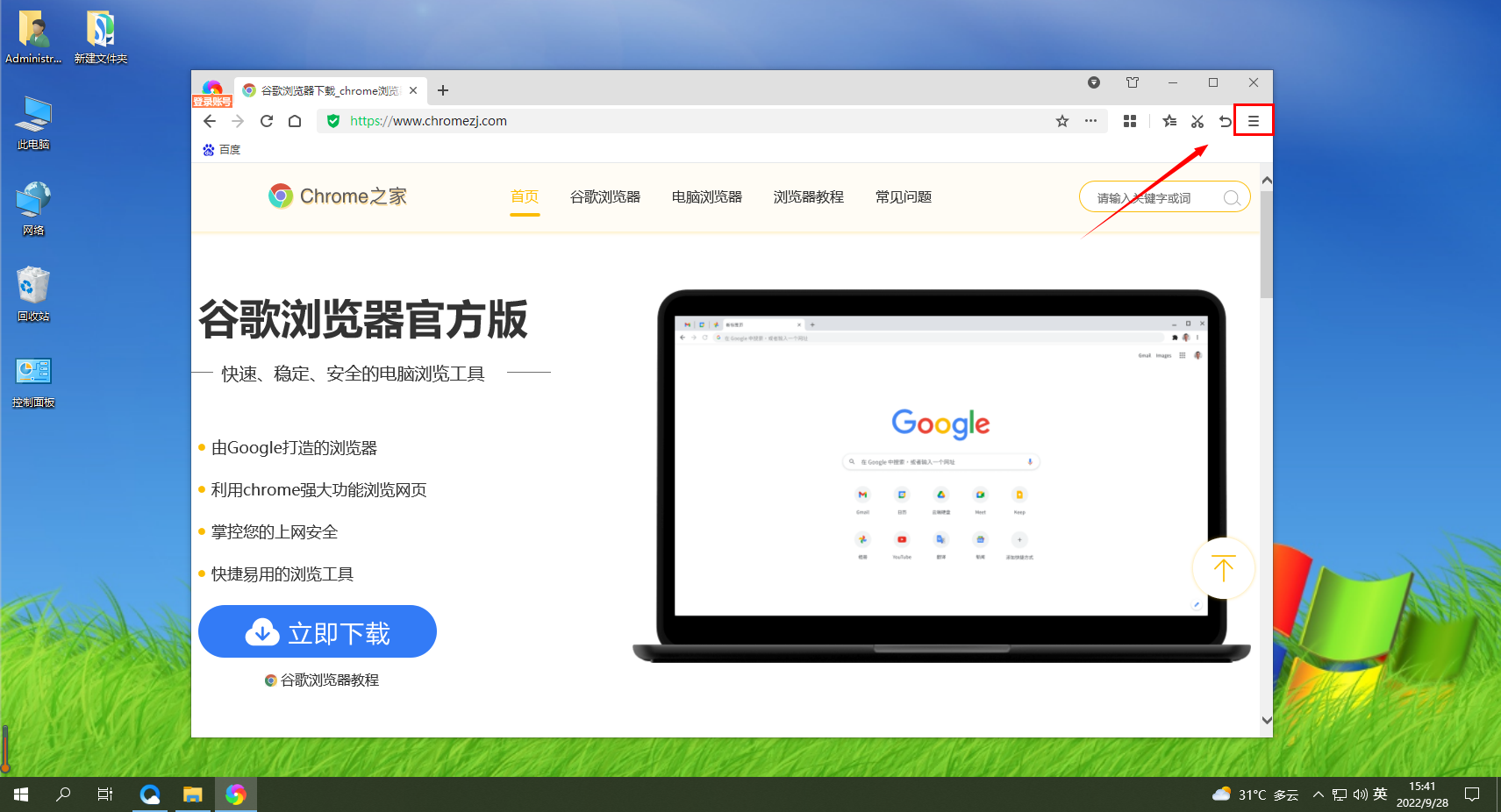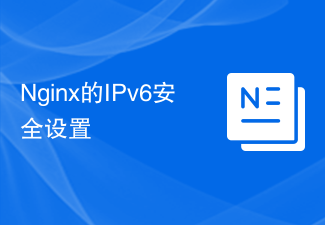 Operation and Maintenance
Operation and Maintenance Linux Operation and Maintenance
Linux Operation and Maintenance How to set up a CentOS system to prevent the execution and transmission of malicious code
How to set up a CentOS system to prevent the execution and transmission of malicious codeHow to set up CentOS system to prevent the execution and transmission of malicious code
The rapid development of the Internet and the popularization of information technology make computer security issues particularly important. Among them, the execution and transmission of malicious code is the most common security risk. This article will describe how to set up a CentOS system to prevent the execution and transmission of malicious code, and provide relevant code examples.
-
Installing and updating the system
First, make sure the CentOS system is the latest version and install the latest security updates. Execute the following command to update the system:sudo yum update
-
Install firewall
Firewall is one of the important measures to protect computer security. In CentOS systems, you can use iptables or firewalld as a firewall. The following is a sample code to install and enable firewalld:sudo yum install firewalld sudo systemctl start firewalld sudo systemctl enable firewalld
-
Turn off unnecessary services
There may be some unnecessary services in the system, which will increase the security risk of the system. You can use the following command to list the currently enabled services and close unnecessary services according to actual needs:sudo systemctl list-unit-files --type=service | grep enabled sudo systemctl stop [service_name] sudo systemctl disable [service_name]
-
Disable unsafe network services
Some network services may have security vulnerabilities , in order to protect system security, it is recommended to disable these services. The following is a sample code to disable the FTP service:sudo systemctl stop vsftpd sudo systemctl disable vsftpd
-
Installing and configuring SELinux
SELinux is the default security module of the CentOS system and can limit the execution of malicious code. The following is sample code for installing and configuring SELinux:sudo yum install selinux-policy-targeted sudo setenforce 1 sudo sed -i 's/SELINUX=disabled/SELINUX=enforcing/g' /etc/selinux/config
-
Use secure software sources
Using officially recognized secure software sources can ensure the security of the software. The following is the official software source sample code of CentOS:sudo yum install epel-release
-
Install anti-virus software and malicious code scanning tools
Install anti-virus software and malicious code scanning tools to actively detect and remove the system Malicious code. The following is a sample code for installing ClamAV antivirus software and rkhunter scanning tool:sudo yum install clamav rkhunter sudo freshclam sudo rkhunter --update
-
Regular backup and monitoring system
Regular backup of the system can prevent data loss when the system is affected by malicious code. At the same time, it is recommended to use system monitoring tools to monitor the operating status of the system in real time and promptly discover and deal with possible security vulnerabilities. The following is sample code to install and configure backup tools and monitoring tools:sudo yum install rsync sudo crontab -e
-
2 * rsync -avz --delete /path/to/source /path/ to/backup
sudo yum install htop
htop
In summary, by installing and updating the system, setting up firewalls, closing unnecessary services, and disabling unnecessary Measures such as secure network services, installing and configuring SELinux, using secure software sources, installing anti-virus software and malicious code scanning tools, and regularly backing up and monitoring the system can help us effectively prevent the execution and transmission of malicious code in CentOS systems. Of course, these measures cannot completely eliminate security risks, but they can greatly improve the security of the system.
The above is the detailed content of How to set up a CentOS system to prevent the execution and transmission of malicious code. For more information, please follow other related articles on the PHP Chinese website!
 解决“win11开机后提示pin码不再可用的安全设置更改问题”的方法Jan 29, 2024 pm 02:27 PM
解决“win11开机后提示pin码不再可用的安全设置更改问题”的方法Jan 29, 2024 pm 02:27 PM我们在使用win11系统的时候会设置pin码来帮助自己的电脑数据,不过也有不少的用户们在设置pin码的时候显示此设备上的安全设置已更改,pin码不再可用那么这要怎么办?用户们可以进入疑难解答里面来进行设置,下面就让本站来为用户们来仔细的介绍一下win11开机显示此设备上的安全设置已更改,pin码不再可用怎么办?吧。win11开机显示此设备上的安全设置已更改,pin码不再可用怎么办?首先,在出现你的PIN不可用、需要重新设置PIN的页面,按住shift键并选择重启。稍后会出现请稍后字样,然后进入重
 如何在360极速浏览器中进行安全设置Jan 29, 2024 pm 09:51 PM
如何在360极速浏览器中进行安全设置Jan 29, 2024 pm 09:51 PM360极速浏览器应怎么进行安全设置?我们在使用360极速浏览的时候,应该如何进行安全设置,下面介绍下!我们平时会使用360极速浏览器浏览网页,使用的时候担心会有有害网站入侵我们的游览器,所以我们会进行一些安全设置,那么具体应该如何设置呢,小编下面整理了360极速浏览器进行安全设置详细操作,不会的话,跟着我一起往下看吧!360极速浏览器进行安全设置详细操作1、打开360极速浏览器,找到右上角带三横线的图标,点击进入。2、进入到设置主菜单,找到下面的“选项”,点击进入。3、进入“选项”界面后,在左侧
 PHP文件权限管理和安全设置Aug 08, 2023 pm 02:51 PM
PHP文件权限管理和安全设置Aug 08, 2023 pm 02:51 PMPHP文件权限是服务器上保护文件安全的重要措施之一。合理设置文件权限可以防止恶意用户对文件进行修改、删除或执行恶意代码的行为。因此,在开发和部署PHP应用程序时,必须要对文件权限进行正确设置和管理,以确保应用的安全性。一、基本概念文件权限分为三个层次,分别是用户(Owner)、用户组(Group)和其他用户(Other),每个层次各有三个权限,分别是读(Re
 Nginx的HTTP2协议优化与安全设置Jun 10, 2023 am 10:24 AM
Nginx的HTTP2协议优化与安全设置Jun 10, 2023 am 10:24 AM随着互联网的不断发展和改善,Web服务器在速度和性能上的需求也越来越高。为了满足这样的需求,Nginx已经成功地掌握了HTTP2协议并将其融入其服务器的性能中。HTTP2协议要比早期的HTTP协议更加高效,但同时也存在着特定的安全问题。本文将为您详细介绍如何进行Nginx的HTTP2协议优化和安全设置。一、Nginx的HTTP2协议优化1.启用HTTP2在N
 Nginx访问控制列表(ACL)的安全设置Jun 10, 2023 pm 09:55 PM
Nginx访问控制列表(ACL)的安全设置Jun 10, 2023 pm 09:55 PM在今天的互联网环境下,安全性已经成为了任何系统的重要组成部分。Nginx是当前最流行的Web服务器之一,它的访问控制列表(ACL)是保护网站安全的重要工具。一个良好设置的NginxACL可以帮助你保护你的服务器和网站不受攻击。本篇文章将探讨如何设置Nginx访问控制列表来保证你的网站安全。什么是Nginx访问控制列表(ACL)?ACL(AccessCon
 Nginx性能优化与安全设置Jun 10, 2023 am 09:18 AM
Nginx性能优化与安全设置Jun 10, 2023 am 09:18 AMNginx是一种常用的Web服务器,代理服务器和负载均衡器,性能优越,安全可靠,可以用于高负载的Web应用程序。在本文中,我们将探讨Nginx的性能优化和安全设置。一、性能优化调整worker_processes参数worker_processes是Nginx的一个重要参数。它指定了可以使用的worker进程数。这个值需要根据服务器硬件、网络带宽、负载类型等
 Nginx的IPv6安全设置Jun 10, 2023 pm 02:16 PM
Nginx的IPv6安全设置Jun 10, 2023 pm 02:16 PM随着IPv6的普及,越来越多的网站需要考虑IPv6的安全性,而Nginx作为一款高性能的Web服务器,也需要进行IPv6安全设置来保证网站的安全运行。本文将介绍Nginx的IPv6安全设置方法及注意事项,帮助管理员更好地保障网站的安全。开启IPv6支持首先,在Nginx中开启IPv6支持非常重要。要确保Nginx被编译时,使用了正确的IPv6选项。在编译时,
 Nginx的HTTP响应头与安全设置实践Jun 10, 2023 am 10:22 AM
Nginx的HTTP响应头与安全设置实践Jun 10, 2023 am 10:22 AMNginx是一款广泛使用的Web服务器和反向代理服务器,在提供高性能Web服务的同时,Nginx也具有良好的安全性能。而在Nginx的配置中,HTTP响应头和安全设置的正确配置是保证Nginx安全性的重要因素之一。本文将介绍Nginx的HTTP响应头和安全设置,并提供一些实践经验。一、HTTP响应头HTTP响应头是服务器响应客户端请求时,返回的一些HTTP头


Hot AI Tools

Undresser.AI Undress
AI-powered app for creating realistic nude photos

AI Clothes Remover
Online AI tool for removing clothes from photos.

Undress AI Tool
Undress images for free

Clothoff.io
AI clothes remover

AI Hentai Generator
Generate AI Hentai for free.

Hot Article

Hot Tools

Atom editor mac version download
The most popular open source editor

VSCode Windows 64-bit Download
A free and powerful IDE editor launched by Microsoft

MinGW - Minimalist GNU for Windows
This project is in the process of being migrated to osdn.net/projects/mingw, you can continue to follow us there. MinGW: A native Windows port of the GNU Compiler Collection (GCC), freely distributable import libraries and header files for building native Windows applications; includes extensions to the MSVC runtime to support C99 functionality. All MinGW software can run on 64-bit Windows platforms.

SublimeText3 Linux new version
SublimeText3 Linux latest version

mPDF
mPDF is a PHP library that can generate PDF files from UTF-8 encoded HTML. The original author, Ian Back, wrote mPDF to output PDF files "on the fly" from his website and handle different languages. It is slower than original scripts like HTML2FPDF and produces larger files when using Unicode fonts, but supports CSS styles etc. and has a lot of enhancements. Supports almost all languages, including RTL (Arabic and Hebrew) and CJK (Chinese, Japanese and Korean). Supports nested block-level elements (such as P, DIV),





